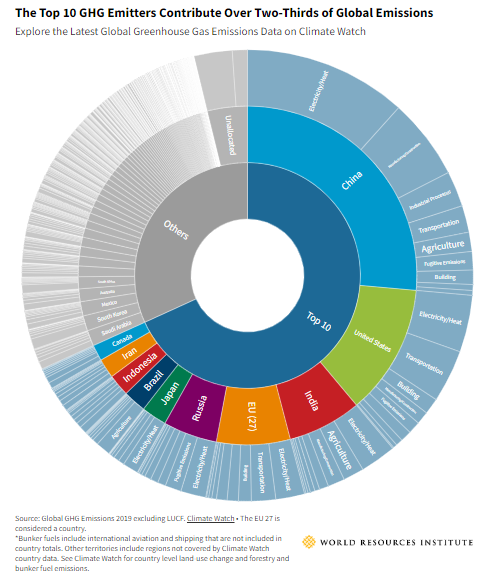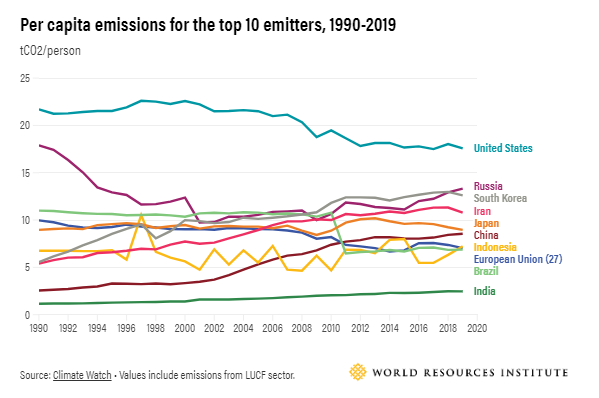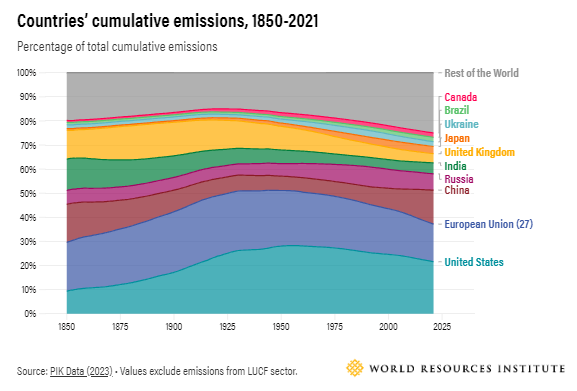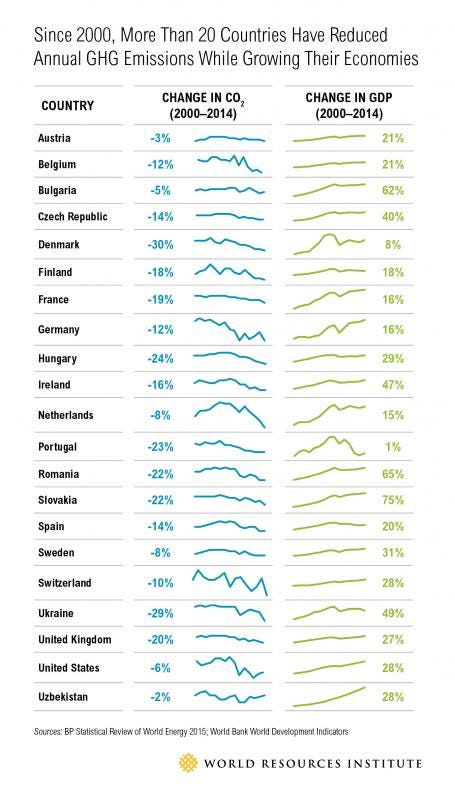The Largest Greenhouse Gas Emitters: Insights and Trends
Written on
Chapter 1: Global GHG Emissions Overview
China holds the title for the highest greenhouse gas emissions worldwide. This status is largely attributed to its large population, rapid industrial growth, and a heavy reliance on coal as a primary energy source. Together, the top three emitters—China, the United States, and India—are responsible for 42.6% of global emissions, while the bottom 100 countries contribute a mere 2.9%.

World Resources Institute
It is crucial to recognize that emissions statistics can vary due to numerous factors, such as shifts in energy regulations, advancements in technology, economic changes, and ongoing efforts to transition toward cleaner energy options. Other significant greenhouse gas contributors include the United States, the European Union (considered collectively), India, and nations with large industrial sectors.
Section 1.1: Analyzing Per Capita Emissions
When evaluating greenhouse gas emissions on a per capita basis, Qatar emerges as one of the highest emitters globally. Despite its small population, Qatar's economy is heavily dependent on the oil and gas industries, significantly raising its per capita emission figures.
Among the top ten total GHG emitters, the European Union has successfully reduced its per capita emissions by 29% since 1990, placing it in the eighth position, below China and Indonesia. The United States has also seen a 19% reduction in per capita emissions since 1990. However, these declines in both total and per capita emissions for the EU and U.S. are relatively recent developments.

World Resources Institute
Among the top emitters, India stands out with the lowest per capita emissions. Overall, China, the United States, India, and the EU are at the forefront of global emissions. Historically, the U.S. and EU have accounted for the majority of GHG emissions, contributing a combined total of 37% of cumulative emissions worldwide.

World Resources Institute
Chapter 2: Achieving Economic Growth Alongside Emission Reductions
Is it feasible to cut down carbon emissions while enhancing GDP? The answer is yes. This approach, commonly referred to as "decoupling," allows for economic growth without corresponding increases in carbon emissions. Technological advancements, policy changes, and alterations in energy sources play pivotal roles in this process.
The United States exemplifies a country that has achieved multiple years of economic growth decoupled from rising carbon dioxide emissions. Furthermore, 21 other nations have managed to lower their greenhouse gas emissions while continuing to grow their GDP.
The first video titled "Which countries have emitted the most CO2?" explores the major contributors to carbon emissions, providing valuable insights into this pressing issue.

World Resources Institute
Several strategies can facilitate the decoupling of economic growth from carbon emissions:
- Transition to Renewable Energy: By moving away from fossil fuels and investing in renewable sources like wind, solar, and geothermal energy, countries can significantly reduce emissions while fostering economic growth.
- Energy Efficiency Improvements: Increasing energy efficiency across industries, transportation, and infrastructure can lower consumption and emissions, leading to cost savings for both the economy and the environment.
- Policy Measures and Regulations: Implementing policies that encourage low-carbon practices—such as carbon pricing, emissions trading, and subsidies for renewable energy—can motivate businesses and individuals to adopt cleaner technologies.
- Innovation and Research: Investing in R&D for cleaner technologies and sustainable practices can spur innovation and contribute to emission reductions while creating new industries and job opportunities.
- International Cooperation: Global collaboration on climate initiatives and technology transfer can accelerate the adoption of sustainable practices, promoting economic growth while combating climate change.
While balancing economic expansion and carbon emission reductions is complex, it is clear that sustainable development is attainable through innovative policies, technological advancements, and collaborative efforts across sectors. Governments, businesses, and individuals all play vital roles in driving these necessary changes toward a more sustainable future.
Thank you for reading! If you find my writings helpful or inspiring, please feel free to highlight, clap, comment, or treat me to a coffee. Your feedback is crucial for writers on platforms like Medium to grow and remain motivated.
Kind regards,
Mirac
The second video titled "Per-capita emissions" provides an in-depth look at how individual countries' emissions compare when adjusted for population, offering further context to the discussion on greenhouse gas emissions.